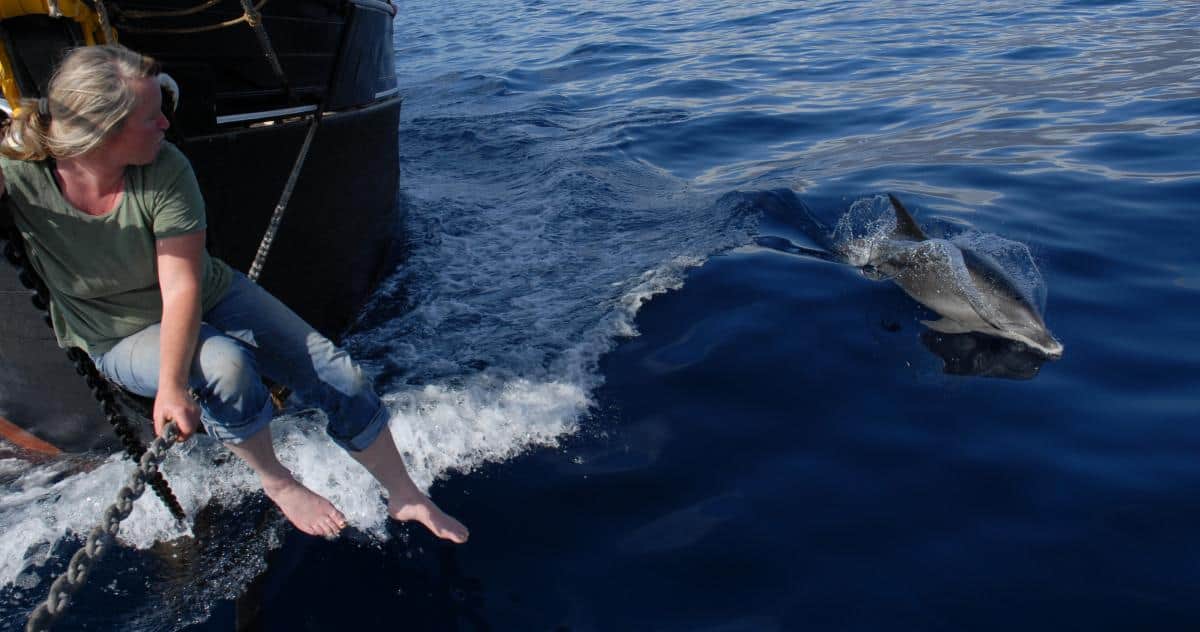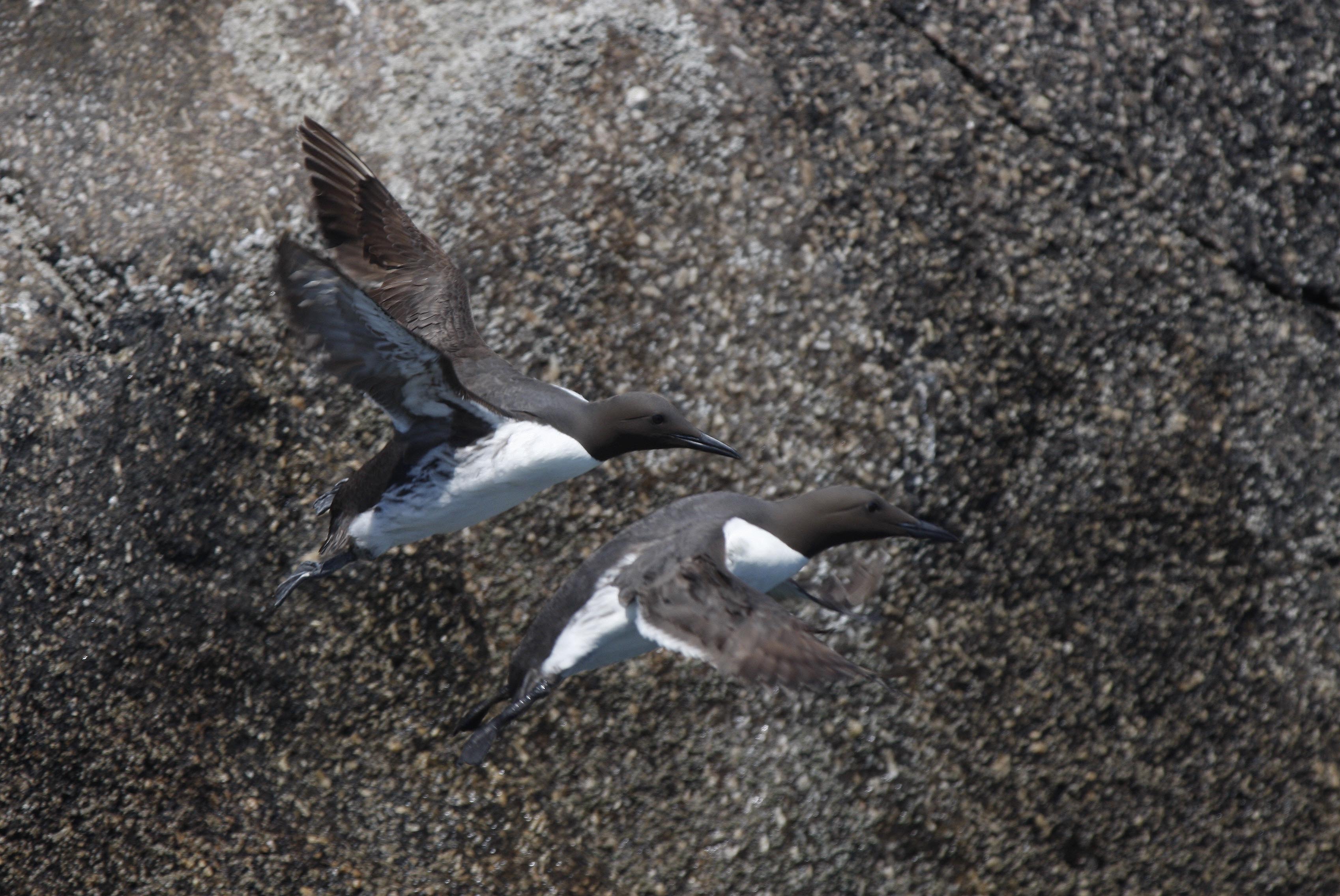Britain has a mild maritime climate. The Western and Southern shores are swept by the warm Gulf Stream which comes all the way from The Caribbean and can sweep along exotic species like Portuguese men o war and turtles. The Westerlies bring fast changing weather and ocean birds get blown in during gales, so gannets and storm petrels are common Atlantic coasts. The many offshore islands like the Channel Islands, Scillies, Isle of Man, Inner and Outer Hebrides are stepping stones for migrant birds and the sea cliffs are safe havens for birds to breed. Underwater Britain may not have coral reefs but avid fans of the BBC Blue Planet TV series will know that lobsters, otters, seals and Basking sharks lurk among the kelp fronds.
Expert View: Best Places in Britain for Marine Wildlife
The advantage of wildlife watching on a sailing boat is that your mode of transport is quiet, as long as you are not in the middle of a tack or gybe with flapping sails. In deep waters you can sail under sea cliffs where birds breed, close to reefs and islands where seals hang out and offshore amongst the bigger marine mammals. It is not a cliche – dolphins really do love to ride a pressure wave, and the bows of our traditional vessels tend to be quite ‘bluff’ so they creat a big bow wave for the dolphins to play in. We also have bowsprits you can go out on and be only a few feet above these amazing sea creatures.
Dolphins & Whales round Britain
Pelagic species like Common Dolphin come in to our shores from the Atlantic Ocean so Cornwall, Western Approaches, South and Western Ireland and NW Scotland are good options. Anywhere with strong tides or sudden shallows that create upwellings of nutrients attract cetaceans. The Channel Isles, Isles of Scilly, sailing around Lands End or the Lizard are all good spots. Read more in our article on Cornwall Wildlife.
Scotland is good for cetaceans on both coasts. There is a regular killer whale pod that visits Mallaig area and the Moray Forth has resident bottlenosed dolphins. See our separate article on wildlife in Scotland.

Seals in England & Wales
Common seals are the ones that look like fluffy teddy bears when young and you can find them if sailing on the East Coast at places like Blakeney or Horsey Gap in Norfolk, Donna Nook in Lincolnshire or the Farne Islands in Northumberland. In the South West we have Western Grey Seals and they breed in sea caves ….but also go scavenging in fishing ports. August – September is breeding time so a good chance to see them in Devon and Cornwall. In the Scillies you can spot them all year around in places like Menawerthan or any half tide reef.
In Wales offshore islands like Skomer and the whole Pembrokeshire Coast are good for seal spotting.

Bird Watching by Sailing Boat
The East Coast around Suffolk and Norfolk has the habitats ideal for waders, plovers, ducks as well as the usual seabirds. You will find Egrets, Heron, Curlew and oyster catchers all around the coast. Essex and the Solent has a lot of mud and salt marsh.
Closer to the Atlantic you get the ocean birds coming to the shore to breed in high cliffs or burrows. guillimots, Razorbills, Fulmar, Kittiwake, Shearwaters and Puffins. There are only small numbers of puffins on Scilly or the Farne Islands but lots on Lunga, Shiant Islands and St Kilda in Scotland.
There are sea eagles and golden eagles on Mull and Western Scotland generally. In Devon, Dorset and Cornwall we have ravens, peregrine falcons and kestrels along the sea cliffs and owls in the wooded creeks.




